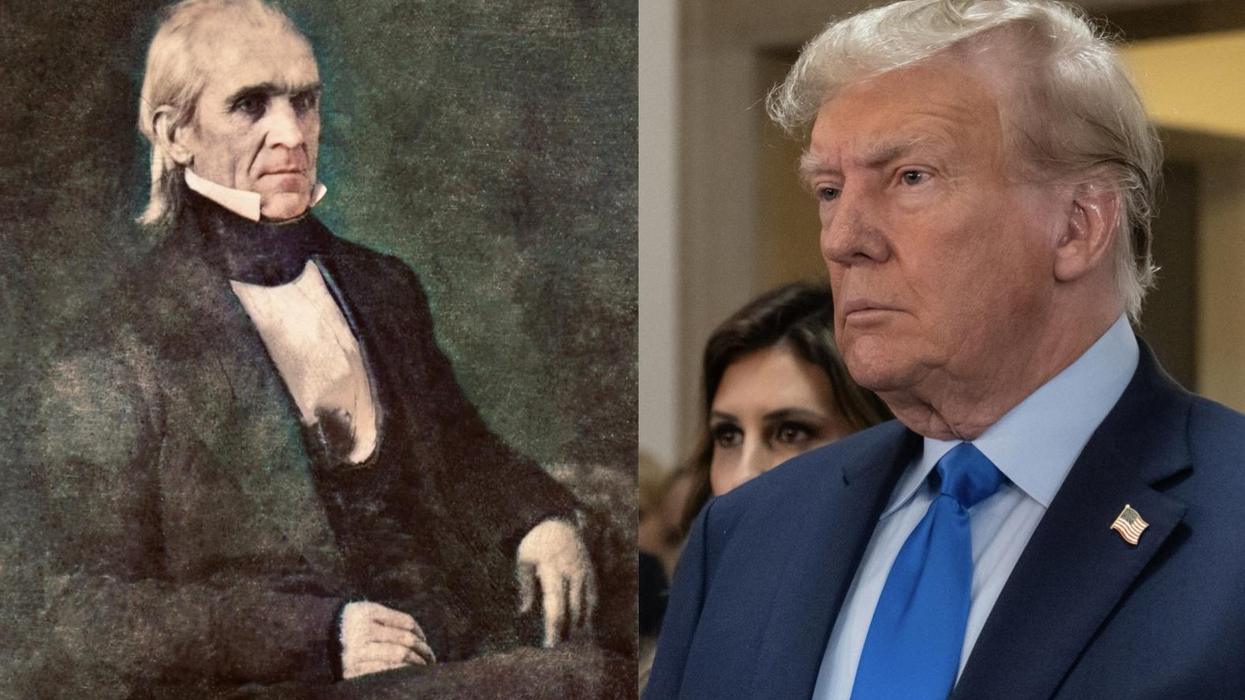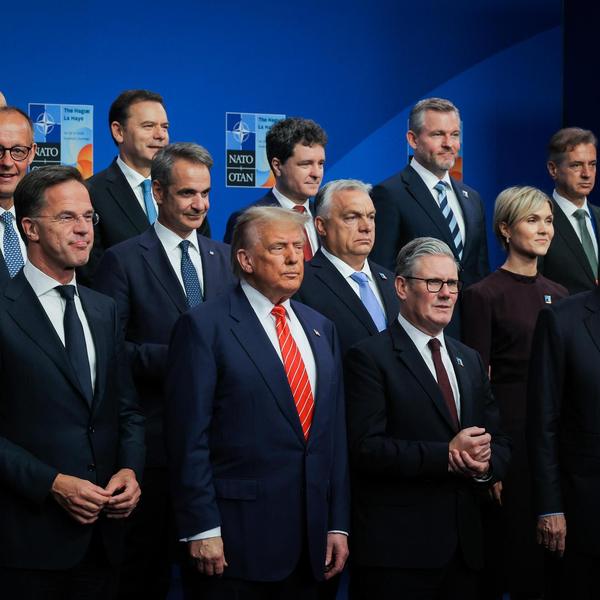“The easiest way to inject a propaganda idea into most people’s minds is to let it go through the medium of an entertainment picture when they do not realize that they are being propagandized,” explained Elmer Davis, a renowned CBS broadcaster, who had just been named director of the Office of War Information (OWI), a Pentagon program created on June 13, 1942, six months after Pearl Harbor.
Later in 1953, as the Cold War was in full swing, President Dwight D. Eisenhower commented on the burgeoning partnership between Hollywood and the Pentagon by stating that, "the hand of government must be carefully concealed and […] wholly eliminated," adding that the engagement should "be done through arrangements with all sorts of privately operated enterprises in the field of entertainment, dramatics, music and so on."
Thus, the president who coined the term “military industrial complex,” was, in fact, one of the first major proponents of what would later be called the military entertainment complex or the militainment industry.
Today, this militainment industry is thriving. From Top Gun to the Marvel franchise and even shows like Extreme Makeover, the Pentagon has been able to shape the narratives of more than 2,500 movies and TV shows. No one knows this better than Roger Stahl, the University of Georgia’s Communications Studies Department Head, and author of Militainment Inc. With University of Bath lecturer and Workers Party Candidate Matthew Alford, investigative journalist Tom Secker, and others, Stahl created “Theaters of War,” a concise 87-minute documentary in which he methodically dissects our modern militainment industry, showing the behemoth it has become.
Responsible Statecraft talked to Stahl, Alford, and Secker about the ways our TV screens are weaponized through the Military Entertainment Complex’s oversight over and control of Hollywood scripts and production agreements.
Scrapyard soft sales on living room screens
“A set of images and stories in front of an American audience are going to displace any kind of calculation regarding taxpayer expense,” said Stahl when asked about the burden incurred by the average American taxpayer when a weapons system is loaned to a studio. He added that “the question of cost gets buried under [...] emotional connections. And the entertainment industry is there to foster these emotional connections.”
In the film, Stahl explained that through the OWI’s successor, the Entertainment Liaison Office, the Department of Defense conditions the loaning of weapons systems on having complete access to the studio’s script for a new movie. Once the script is vetted and returned with notes, script changes, or even broad plot alterations, the studio can either accept the changes in whole, or lose access to the military’s toys. This skewed relationship can lead to brazen propaganda.
Halfway through “Theaters of War,” viewers are shown what seems to be an in-movie ad. In 2017’s “The Fate of the Furious,” the eighth installment of the Fast & Furious franchise, rapper and actor Ludacris reads out a 30-word seeming-advertisement hyping Textron Systems’ remote-operated Ripsaw tank. It turns out Ludacris’ lines were written not by a scriptwriter, but by the Entertainment Liaison Office. The scene effectively became an unskippable ad, brought to the viewer by the U.S. military.
Similar covert marketing scenes are visible in hundreds of blockbuster movies, from the Transformers franchise — one of the characters, Starscream is an F-22 fighter jet — to the much-vaunted Marvel movies. While the audience is subjected to obvious sales pitches, in some cases the Pentagon is also promoting faulty and useless products.
Lockheed Martin’s F-35 fighter jet has been deemed “the heavy-weight champion of poorly conceived futuristic weapons,” costing American taxpayers upwards of $2 trillion. Yet, the History Channel’s “Secret access: Superpower 2011” documentary paints a different picture. The short series showcases the F-35 as the only path towards maintaining U.S. militaristic dominance, and in “Man of Steel,” Superman himself flies by a fleet of F-35s during his battle with the ruthless Kryptonians. According to Stahl, all of this was made possible by the Entertainment Liaison Office.
Tom Secker, the investigative journalist labeled a “vexatious requester” by the Pentagon due to his incessant barrage of FOIA requests, shared the hitherto unpublished Production Assistance Agreement Contract for “Mission Impossible 7: Dead Reckoning.”
In addition to permitting the Mission Impossible crew to film on U.S. military bases in the UAE, the contract has the Defense Department loaning the production team a Boeing-made V-22 Osprey for use in at least two scenes in which the aircraft would be filmed both internally and externally.
The Osprey, known as the “widowmaker,” is a $120 billion disaster that is one accident away from being decommissioned, as it has already caused the deaths of 62 service members.
According to Stahl, these scenes are intentionally designed to “forge an emotional connection between the viewer and the weapon systems.” A connection that could ease the blow in a near future scenario during which the viewer might realize how useless and expensive the F-35, Osprey and other systems like the LCS program have turned out to be. This serves to “normalize these huge expenditures,” he added.
Creating scenes like these means, according to Alford, “that they [the Pentagon] are able to show how sexy, how wonderful, how useful and how targeted their new products are.” The public, in turn, will be less likely to see the “messy, unpleasant and cruel” side of the industry.
Promote, whitewash and justify engagements
While the Pentagon once explained its stated aims for its involvement in the entertainment industry as a directive to promote “authenticity of the portrayal of military operations” and to maintain an “accepted standard of dignity” in the military’s portrayal, these directives changed in 1988. The new aims have the collaboration promoting “public understanding of the U.S. armed forces and DoD,” enhancing of “Armed Forces recruitment and retention programs” and adherence to and promotion of “U.S. Government policy."
One of the most disturbing scenes in “Theaters of War” comes from the 2017 film "The Long Road Home." In one scene, a military colonel claims that the 2004 Sadr City operation during the Iraq War, which resulted in the deaths of 22 servicemen and 940 Iraqis, was necessary to rid two million Iraqis from the oppression of a dictator and to provide them with a "better future."
That claim ignores the series of false narratives — like the existence of WMD or Iraq’s purported ties to al-Qaida — that got U.S. boots on Iraqi soil in the first place, nor does it examine whether the U.S. had an obligation to protect people from the world’s dictators.
This scene and others like it have one implicit aim according to Alford; To “be a bit more confident about how great military engagements are,” and that they work. Whether it’s Ben Afleck’s “Argo” whitewashing the CIA’s role in ousting Iran’s democratically elected prime minister Mohammad Mossadegh in 1953, “Black Hawk Down” painting a veneer of courage over the disastrous debacle in Somalia, or 1986’s “Top Gun” rinsing the image of the military after two decades of a calamitous Vietnam campaign, these covert militainment campaigns have largely worked.
More recently the second season of “Jack Ryan” has lovable Jim from “The Office” working through the CIA to topple a nuclear-armed Venezuelan dictator in hopes of installing a magnanimous liberal populist. The season aired around the same time Washington was parading Juan Guaido as Venezuela's new leader.
The militainment industry’s costs
In giving an overall diagnosis of the problem, Stahl mentioned that the issue lies with the “American People’s perceived interests,” adding that while they focus on state subsidies and welfare programs they are “oblivious to the costs of our militaristic engagement with the world” — a cost that was briefly summarized at the end of the documentary as reaching $8 trillion in the period after 9/11 alone.
With a sixth failed audit, a military budget that’s rapidly nearing $1 trillion and a new nuclear ICBM system on the books, the influence of the militainment industry is undeniably sinister and more present than ever.
Still, Theaters of War does offer a glimmer of hope: transparency. Stahl, Alford, Secker and others in the film recommend that every movie or show the Pentagon works with displays a prominent disclaimer at the beginning, not buried in the credits, that the Department of Defense, CIA, or any other government agency was involved in the production. Viewers then will know that what they are about to watch is, at least partially, “a propaganda idea,” as Elmer Davis puts it.
















